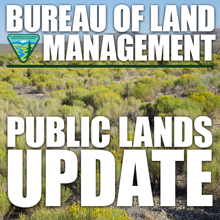
“Finalizing this effort today is the culmination of the President and the Secretary’s historic efforts to meaningfully address wildfire risks across the West,” said Casey Hammond, Principal Deputy Assistant Secretary for Land and Minerals Management.
“From creating new administrative tools to completing environmental analyses allowing for strategic rangeland treatments, the Department has actively led the way in reducing fuel loads and the threat of catastrophic wildfires.”
The Fuels Reduction and Rangeland Restoration Programmatic Environmental Impact Statement analyzes the environmental effects of fuels reduction projects, invasive species treatments, and vegetation restoration work within important sagebrush communities. Local BLM District and Field Offices will plan and implement fuels reduction and rangeland restoration projects using manual, chemical and mechanical treatments, including prescribed fire, seeding and targeted grazing.
This record of decision builds on a complementary planning effort – the Programmatic Environmental Impact Statement for Fuel Breaks in the Great Basin – that the BLM completed in April 2020. That document provides for the construction and maintenance of a system of up to 11,000 miles of strategically placed fuel breaks to control wildfires. To date, the BLM has completed over 1,000 miles of fuels breaks as part of this historic effort.
These efforts are part of a larger national wildfire reduction strategy. BLM has significantly reduced hazardous fuel loads in fire-prone areas by treating more than 782,000 acres using a variety of active management vegetation treatments including mechanical, biological, and chemical tools as well as prescribed fire. The Department of the Interior has treated 5.4 million acres of land since 2017 and a ten-year best, 1.5 million acres in Fiscal Year 2020.
Intact sagebrush communities are disappearing within the Great Basin due to the encroachment of pinyon-juniper and increased size and severity of wildfires which typically lead to the spread of invasive annual grasses. Approximately 45 percent of the historic range of sagebrush has been lost.
Fuels reduction and rangeland restoration treatments can reduce fire severity, increase sagebrush communities’ resistance to invasive annual grasses and improve their ability to recover after wildfires. The BLM has extensively documented the effectiveness of reducing fuels and performing restoration treatments in the programmatic environmental impact statement.
This record of decision and programmatic environmental impact statement do not authorize specific projects. Local BLM District and Field Offices within the Great Basin will use the programmatic environmental impact statement to comply with National Environmental Policy Act requirements when planning and analyzing specific local fuels reduction and rangeland restoration projects to allow for more rapid implementation.





